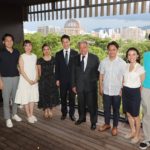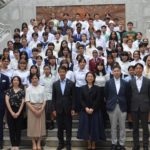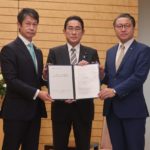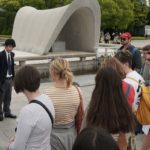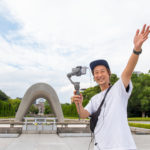The world’s biggest conversation in Hiroshima
In his 2018 address to the University of Geneva, United Nations Secretary-General, António Guterres, made clear the important role of young people in the UN’s Agenda for Disarmament. Describing the young as “the most important force for change in our world” he committed to working to help them “acquire the knowledge and skills to amplify your voices and lead the change we need.”
The August 6 global peace dialogue event “UN 75 in Hiroshima” held on the 75th anniversary of the A-bombing of Hiroshima and in the 75th year since the founding of the United Nations was part of this process; part of what the Secretary-General described in his opening message, delivered by videolink, as “the world’s biggest conversation on how we can collectively reinvigorate global cooperation for a better future for all”. Due to the Covid-19 pandemic all the participants who attended wore face shields throughout the event and two participants joined from outside Hiroshima Prefecture by videolink.

Although the Secretary-General could not be in Hiroshima himself, UN Under-Secretary-General and High Representative for Disarmament Affairs, Ms Nakamitsu Izumi, joined the panel, along with the Governor of Hiroshima Prefecture, Yuzaki Hidehiko, and moderated by Professor Akiyama Nobumasa of Hitotsubashi University. The panelists were clearly excited to hear the proposals made by a group of presenters selected from the public on how to further the cause of disarmament and how disarmament can help advance UN Sustainable Development Goals (SDGs). Held in Hiroshima on the anniversary of the A-bombing, it was appropriate that nuclear disarmament was the focus of many of the proposals.

Nakamitsu kicked off the session with some remarks about the linkage between disarmament and SDGs. The Agenda for Disarmament was the first attempt to bring the disarmament debate out of technical silos dominated by experts and broaden the discussion, linking it to the SDGs, she said. She reiterated that UN75 is the world’s biggest dialogue process, a process that aims for an “inclusive multinationalism” that goes beyond governments, and emphasized the important role younger generations have in setting the priorities for the next 25 years.

She concluded her opening remarks by saying that while the establishment of the UN was very much a top down initiative, recent grassroots movements, such as Me Too, Fridays For The Future and Black Lives Matter have shown her that that change in the world today has to come from the bottom up. The tremendous energy of these movements is driving their demands into the purview of policy makers and leaders. An important role of leaders today is to enable young people to contribute, create innovative approaches, organize, connect with each other and share experiences. Nakamitsu said, it is this kind of creative energy and these kinds of innovative ideas I am looking forward to hearing today and taking back to New York.
Hiroshima Governor, Hidehiko Yuzaki, also had great expectations; “The future of planet earth really depends on you”, he said with a smile, before also stressing the close relationship between disarmament and the SDGs, and saying how the two goals reinforce each other in a kind of virtuous cycle.

The session was divided into 4 themes
- Advocacy: The power of stories and the role of Hiroshima hibakusha and storytellers
- Nuclear disarmament education and coordination with communities
- Inclusiveness through technology and the role of Social Media Networks
- Bridging disarmament with social and economic issues
Advocacy: The power of stories and the role of Hiroshima hibakusha and storytellers
Nagayo Kaya talked about her experience interpreting for a Hiroshima hibakusha A-bomb survivor trying to help convince Cypriot authorities to ratify the UN treaty on the prohibition of nuclear weapons. Frustrated at the gap between people’s feelings and policy – despite being obviously moved by the hibakusha testimony, Cyprus is yet to sign the treaty – she proposed an incentive scheme for nations to take steps towards disarmament and peace. Such incentives could take the form of goods, know-how or human resources, leveraging the strengths of the UN member states. The UN could offer Japan, for example, experts in the field of renewable energy in exchange for Japan’s ratification of the treaty on the prohibition of nuclear weapons.

Mary Popeo introduced the activities of the Hiroshima-based Peace Culture Village (PCV) with the aim of raising human consciousness through Hiroshima-based peace education. Mary made the point that, “If we want to create a world where the SDGs are realized, a disarmed world, then education is going to be key. Even if we eliminate nuclear weapons, if human beings don’t learn to relate to each other openly, honestly, intimately in the pursuit of universal well-being then we will just continue to find ways to destroy each other and ourselves.“
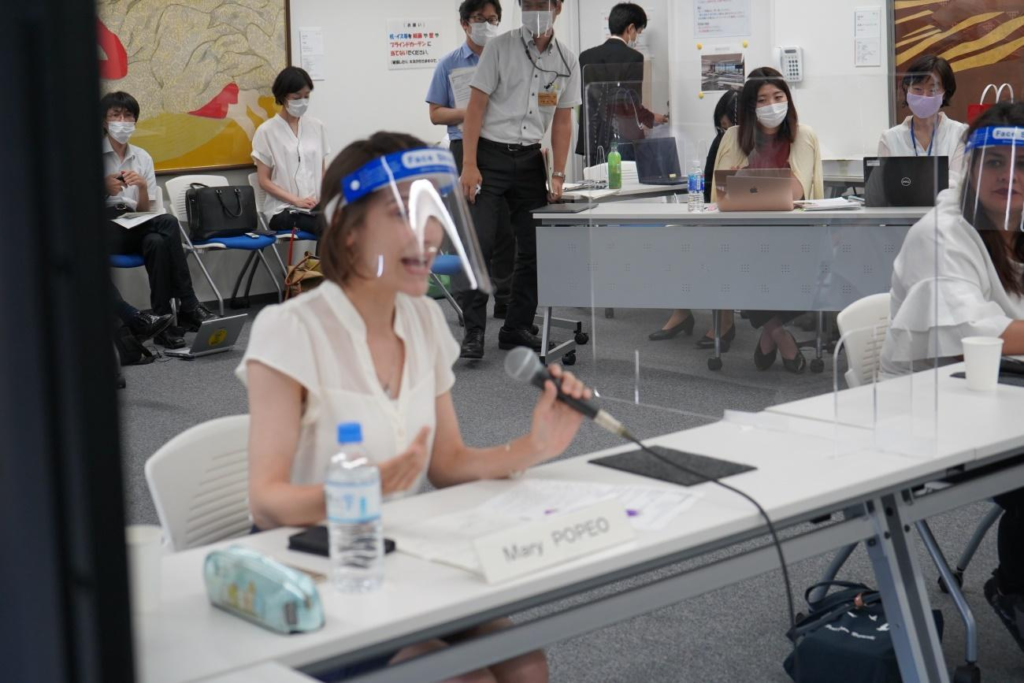
Popeo described how her colleagues got together in a coffee shop to discuss how to continue to share the stories of hibakusha in a post Covid-19 world. The result of these discussions was the “Peace Portal”, launched August 6. The platform uses digital technology to provide Hiroshima-based learning activities to people around the world who would never be able to visit Hiroshima as well as an app that guides you around Hiroshima Peace Memorial Park. Confessing to being an avid gamer, she sees almost endless possibilities in using gaming technology to promote peace culture and spread the message of Hiroshima.

Tashiro Reiko, a 2nd generation hibakusha and high school educator, also talked about how personal stories have the power to transcend borders and discussed the importance of hibakusha testimony. Her mother was exposed to the Hiroshima A-bomb when she was 6 years old, but only began to share her story when she was 70. When she was telling her story at a high school in New York in 2010, a Palestinian boy who’s family had been killed in an Israeli attack, asked her mother how she could forgive the Americans for what they had done to her. Her answer surprised him. She said that she did harbor deep bitterness towards the Americans at first, but eventually realized that hate only breeds more hate, a vicious cycle that will eventually lead us back to war. She decided she must break that cycle. The boy was confused and found it a difficult stance to accept. A year later, however, her mother received a message that the young man had learned to become forgiving and tolerant. Tashiro put this episode forward to illustrate that people-to-people interactions rather than nuclear weapons are the best deterrent.

Disarmament Education: Schools, communities and academics
Ankita Seghal started her presentation by explaining that she grew up knowing little about the Atomic bombings of Hiroshima and Nagasaki. She recalled that only 2 paragraphs of her junior high school textbook were devoted to the bombings. It was only when she visited Nagasaki and talked with hibakusha that she got a real picture of what had happened. After highlighting that today’s most powerful nuclear bombs are 4000 times more powerful than the one that claimed 140,000 lives in Hiroshima, Ankita proposed a scheme beginning with bringing the stories of hibakusha to schools and citizen’s groups around the world through videos, live sessions and online chat to help students really connect with the subject matter. A youth based movement, similar to that led by Greta Thunberg, focused on disseminating factual information, would follow. The final part of Ankita’s proposal was going beyond intergovernmental dialogue, including wider civil society and establishing a culture of peace.

Suzuki Kento also agreed that the youth have great potential to push for change in general and disarmament in particular. He, however, expressed frustration that few of his peers seem to be engaged in agitating for issues such as disarmament. His proposal focused on how to get a new generation of people to “internalize” global issues, connecting with them on a personal level as the key to change. He envisions a three-step process led by Young Disarmament Leaders (YDLs) spread across the globe. These YDLs would visit schools with the aim of making people more aware of lives in other countries, to create a greater sense of connection and attachment when they come across news from these other countries. YDLs would then move discussion on to issues of conflict around the globe and, finally, what they can do as individuals to help improve the situation.

Yanaizu Satoshi took the concept of education beyond school, arguing that everyone, not least government leaders, researchers and policy experts can benefit from being educated on the lived experience of Hiroshima and Nagasaki. His proposal aims at a kind of democratization and humanization of expert knowledge, via a new intellectual community, comprising think tanks, civil society and academia. Knowledge about the latest research on military spending and geopolitical complexity usually only accessible to government leaders could be shared in forums attended by young civil activists, all informed by knowledge of the almost unimaginable consequences of nuclear war.

Such alternative intellectual communities could propose realistic plans for nuclear disarmament to governments, which would be forced to take such proposals seriously and be more transparent and accountable in justifying their security policies. Yanaizu sees this as a way to shift the idea of peace as an issue of the past to a policy issue on which one can vote.
Technology and SNS: Inclusiveness through social media and the role of technology
Eimi Kamibeppu of Hiroshima International School proposed greater utilization of social media as a unique medium through which it is possible to shine a spotlight on global issues and to reach approximately half the world’s population. She mentioned that she has yet to see effective use of social media around the issue of disarmament in the way that movements such as Black Lives Matter have leveraged the medium. She pointed out that social media can be used to not only highlight what is happening around the world, but also to point to valuable educational resources. Kamibeppu made the excellent point that perhaps the lack of trending disarmament content is a lack of a sense of urgency; as she says, no one expects to die in a nuclear attack. Social media can be used to build awareness while also making oneself feel a personal responsibility to follow up social media posts with action.
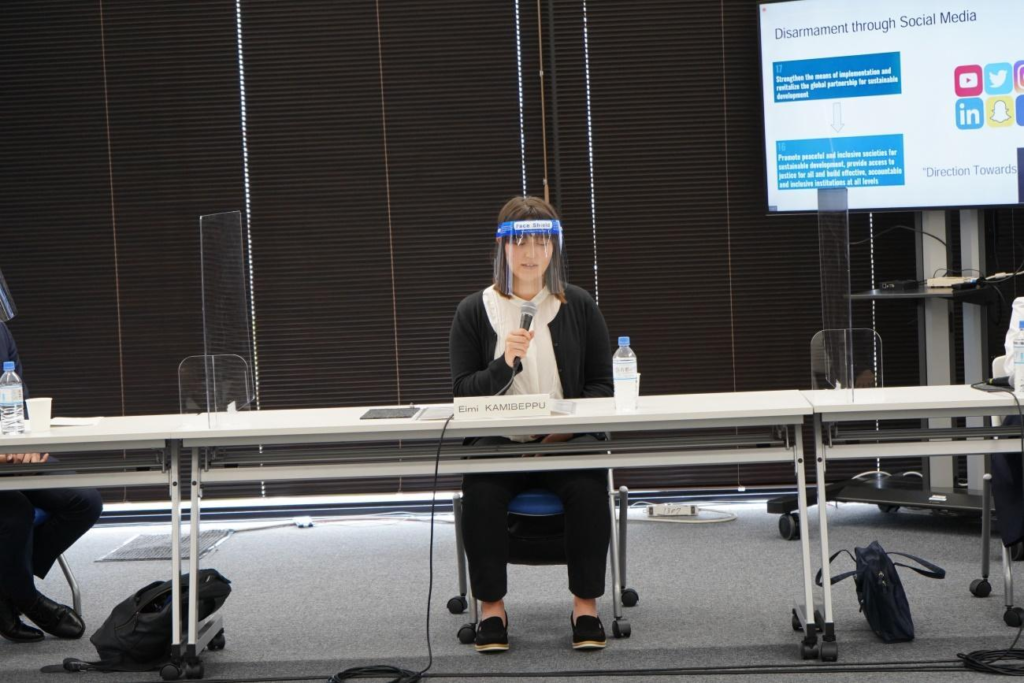
Koizumi Kanon, 2nd year high school student, focused on some concrete steps that the UN could take to accelerate youth engagement and disarmament. Koizumi has taken many of the UN’s excellent online courses, but proposed that collecting them all in one place to make it easier for them to be found. She also proposed lowering the age requirement for participation in many of the UN’s youth-oriented programs to influence young minds at an earlier age, a point later echoed by Hidari Gen. One thing that the UN could do right away is to make sure that they get all their Twitter accounts officially verified. Looking at examples of successful hashtag campaigns she proposed making them more specific and easier to participate in.

Sunagahara Yuriko looked at how technology can be used to promote disarmament and SDGs during the Covid-19 crisis when countries are so focused on themselves. She sees some positives in this crisis, especially enhanced connectivity online. She commented that her university classes going online gave her the opportunity to discuss ideas with a college professor in the US, something that would have been unlikely to have happened under normal conditions. These technologies give us all a platform, so even if a nation decides to withdraw from an international agreement, we can still make our authentic voices heard as individuals.

Bridging the disarmament with social and economic issues
Hidari Gen, representing the Campaign To Stop Killer Robots (fully autonomous weapons), shared observations based on his own outreach activities concerning how disarmament education and ensuring the equal participation of women will help the achievement of sustainable development goals.
He highlighted the efforts of the Japanese government and some academic institutions in Japan to limit the development of prohibited and fully autonomous weapons and called on Japan to take the lead in establishing international ethical guidelines and protecting universities and research institutions from increased military funding on research and development of technologies related to weapons of mass destruction, prohibited weapons such as landmines and cluster munitions and the development of fully autonomous weapons. He also called for more active outreach to young women-led organizations in Japan by making it clear how women like themselves are most likely to be victims of violence and conflict.

Hsin Yen Phoebe, proposed a comprehensive reevaluation and restructuring of society based upon “ecological literacy” which would make the very idea of holding weapons with the potential to destroy our planet untenable. To achieve this she proposed that our education systems need to teach us a planetary awareness that will encourage interdependence and interconnectedness, or, as she succinctly put it, “less ego and more eco”.

Hanako Ttravin, a 3rd year university student at Keio University, looked at how moving towards the achievement of SDGs would impact the accumulation of weapons and associated violence by removing the reasons for turning to them. She shared data on issues of employment insecurity and which are a major contributing factor to young men turning to criminal organizations and terror groups in many parts of the world. She also highlighted diversity as the key to effective, meaningful and equitable discussions.

Words of inspiration, support and encouragement
Throughout the session, the panelists not only listened to and treated the presenters with the utmost respect, they also provided valuable feedback and encouragement.
Nakamitsu in particular was extremely generous in her advice. In tying the first two discussion themes together, she stressed the importance of tempering the power of personal and emotional testimony (for example that of the hibakusha) with realistic and convincing arguments that take into account the incentive structures that uphold the status quo. Never close the door, she said, Whatever your feelings about nuclear weapons, you need to understand the way other people look at defence.

Perhaps most inspiring, was Nakamitsu’s response to an experience shared by 2nd year high school student Kanon Koizumi , who was told by a group of lawmakers in Tokyo that all her activism would, although well meaning, have little real impact. While Koizumi had used the experience to drive herself to learn more about the power structures she was facing, Nakamitsu was unequivocal. “Never be discouraged if an adult says what you are doing doesn’t matter. Just laugh at those adults… The world has always changed because of concerned individuals, so never be discouraged,” she said pointing to how people used to laugh at Greta Thunberg when she started sitting alone in front of the Swedish parliament on Fridays.
She went on to say, “Be ready to learn and grow. Never stay in one place. Never stop listening to others. The world has so many different views and perspectives. Good ideas and policies are always born from discussing different ideas that come together, finding common ground and then it actually goes up to the policy level.” Governor Yuzaki was also optimistic about how individuals can contribute to change. He confessed that people at the very top often don’t know very much about certain issues, relying heavily on the advice of others more expert than themselves, and in that advisory role lies great power.

The challenges facing the world seem huge and overwhelming, but Nakamitsu declared herself to be an optimist as there is always something we can do as individuals. We can always be engaged, we can always acquire the necessary knowledge, skills and agency to be part of the change. In terms of nuclear disarmament she sees the Covid-19 pandemic as a small window of opportunity. She believes in the post-Covid world, governments will, for a short time, be open to reducing military spending to help their economies recover. “Let us try to arm ourselves with knowledge and skills so that we will be able to present realistic, achievable, good alternative policies.”
The presenters at UN75 in Hiroshima showed us that there are young, passionate change-makers ready to make the most of the opportunity.

Information related to this page
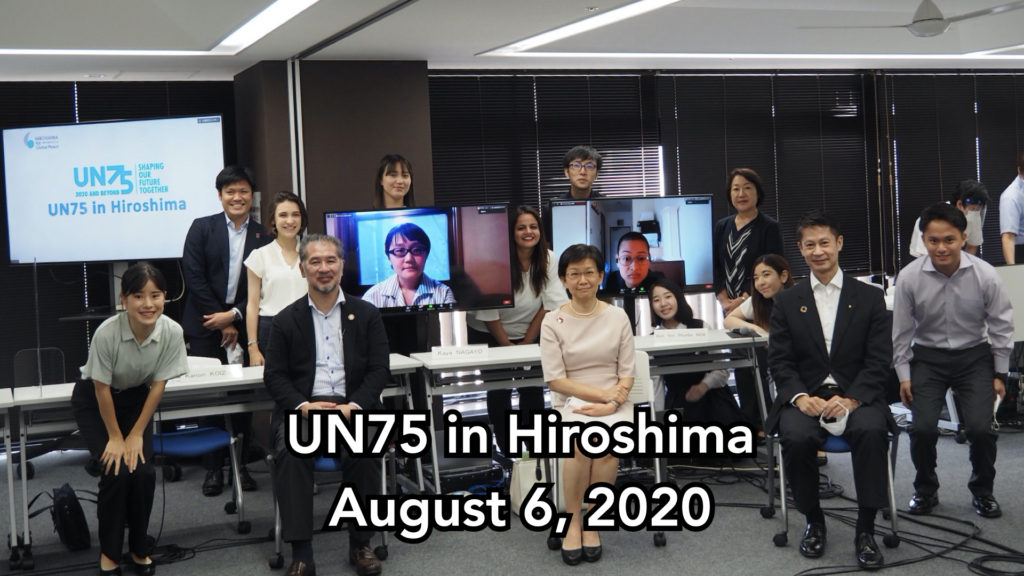

Tags associated with this article



